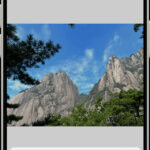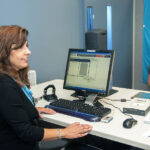Capturing a clear photo of a screen can be surprisingly tricky. Instead of a sharp image, you might end up with glare, strange lines, or distorted colors. This guide will walk you through the common problems you might encounter when photographing screens – whether it’s a computer monitor, TV, or any digital display – and provide simple solutions to achieve professional-looking results.
Common Issues and Solutions for Screen Photography
Dealing with Glare
Glare is a frequent culprit when photographing screens. It’s simply light reflecting off the screen’s surface, obscuring the actual image you’re trying to capture. To combat glare, reposition your camera. Experiment with different angles to find a spot where the reflection disappears. Alternatively, try blocking the light source causing the glare. You can use a shield or even just your hand to create shade between the light and the screen.
Fixing Images That Are Too Dark or Too Bright
Cameras are designed to expose for средний brightness levels. When photographing a screen, especially one that is mostly white or mostly black, the camera can be fooled. A predominantly white screen may appear underexposed (too dark), while a mostly black screen might be overexposed (too bright).
If you’re using a dedicated camera, exposure compensation is your best friend. Adjust it to fine-tune the brightness until it looks right. Manual mode offers even more control. iPhone users have a handy trick: tap on the screen to focus. Focus on an area that represents middle brightness – a mid-gray area is ideal – to help the camera gauge the correct exposure.
Eliminating Vertical or Horizontal Stripes
Those annoying vertical or horizontal stripes are usually caused by screen flicker, particularly from older fluorescent backlights in LCD screens. The flicker occurs because these lights cycle on and off rapidly, and your camera can capture these cycles as stripes if the shutter speed isn’t synchronized. To solve this, adjust your camera’s shutter speed to match your power frequency. If you’re in a 50Hz power area (like most of Europe), use a shutter speed of 1/50th or 1/25th of a second. In 60Hz regions (like the USA), try 1/60th or 1/30th. Unfortunately, controlling shutter speed directly on iPhones for this specific issue can be challenging with default camera apps.
Removing Round Stripes or Moire Patterns
Round stripes, also known as moire patterns, are a visual artifact that appears as wavy lines or patterns. This happens when your camera’s sensor is confused by the fine grid of pixels on the screen. To get rid of moire, simply adjust your distance or angle to the screen. Try moving closer or further away, or slightly shifting your camera angle until the distracting patterns disappear.
Reducing Random Dots or Noise
Random dots, or noise, are typically only noticeable in low-light conditions. Screens are generally bright, so noise shouldn’t be a major issue when photographing them directly. However, noise can appear in darker areas of the screen image or outside the screen area. You can try increasing screen brightness or adding more ambient light to the scene (be mindful of glare when adding light). If noise persists, especially outside the screen area, consider noise reduction in post-processing software.
Correcting Strange Color Casts
Unusual color casts in your screen photos can stem from fluorescent flicker (addressed by adjusting shutter speed as mentioned earlier) or incorrect white balance settings. For precise white balance control with advanced cameras, shoot in RAW format and adjust white balance during post-processing. Alternatively, create a custom white balance setting using a blank white screen as your reference. With iPhones or point-and-shoot cameras lacking custom white balance, focus on a purely white or neutral gray area on the screen to help the camera automatically determine the correct colors. Using a middle gray area also assists with exposure accuracy.
By understanding these common challenges and applying these simple fixes, you can consistently capture clear and accurate photos of any screen.

